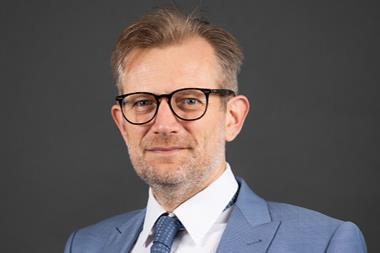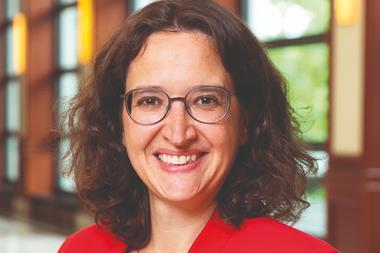“When I think of the destination of this money, I think of the woman who cycles from house to house and cleans someone’s bottom”
The Dutch economy is under a great deal of pressure due to the financial crisis. This affects pension funds as well, and in order to continue paying out pensions in the future, something needs to be changed in the current system. That change is going to take place.
At the end of 2013, all pension funds will have to make a choice for a new pension scheme. Pensioenfonds Zorg en Welzijn (PFZW), the pension fund for health and welfare, has announced its intended decision at the end of last year to choose the ‘reële regeling’ so that a pension that grows along with wage movements in the sector. We believe this is important because, otherwise, pensions will lose their value due to inflation and we want to realise a pension for our participants that corresponds to what they need.
We are hard at work to ensure that the ‘money-box’ is sufficient to meet needs in the future. But how much does the money-box contain at this moment? Currently, the Dutch pension funds have saved an amount of approximately €1trn. Many parties are eyeing the amount of money that has been saved by participants in various pension funds. This money belongs to millions of Dutch citizens, so shouldn’t all this money be invested for the benefit of all those people? Shouldn’t that money be pumped into the Dutch economy to give it a much needed boost that participants would also benefit from?
This money does indeed belong to millions of Dutch citizens. We have about 2.5m participants who are working or have previously worked in the health and welfare sector. Pension accrual is one of their fringe benefits. Our participants are primarily women (approximately 80%) who have a part-time job taking care of other people. When I think of the destination of this money, then I think of the woman who cycles from house to house and cleans someone’s bottom. This is her money, her money-box for retirement.
The Dutch economy could certainly use a financial injection, and of course it would indirectly benefit our participants if the economy improved. Over the past few months, various ideas have surfaced as to where the money could be spent – mortgages, sustainability, the SME sector, the social housing market and so on. But would this financial injection be in our participants’ best interests? Will it improve her pension? That is the question we must always ask ourselves. Our primary goal is to realise the best possible pension for our participants and PFZW wants to do this in the most responsible way. This goal is even specified in legislation. That does not mean that we will not invest in the Dutch economy, but investing in a specific sector is not an objective in itself.
Where does this clamour to invest everything in the Netherlands come from? Is it from the woman working in the day-care centre? Or the man who works with people who have a speech impediment? No, and they are concerned. They have worked hard to save for a decent pension when they retire and suddenly everyone wants their money. Every time a new purpose for the money is proposed we get worried participants on the line saying that this money is supposed to be for their pension. They are worried that it will all be lost.
As I mentioned earlier, investing in the Netherlands is certainly one of the options, as long as it is not an objective in itself. Because it has been quiet for a number of years regarding the subject of pensions, there has not been much attention on the manner in which we provide for a decent pension for our participants. The money that participants save together with their employers is insufficient to provide for a good pension – at least twice as much is needed. By investing the contributions we can pay out three to four times more than what was deposited. That sounds good and we are very proud of the fact that since 1971 we have an average annual return of 8.3 %. Over the past 10 years we have even managed an average annual return of 8.7%, in spite of the economic crisis.
You might think our participants would be very satisfied with these results, but that is not the case. It has nothing to do with the size of the returns – it is because in the past, we did not inform them clearly enough that their deposits were being invested. That the money was not being deposited in a savings account and that if things went badly, the returns could be disappointing. Our participants assumed that their pension was guaranteed. In this aspect we have had to put in some serious effort to catch up, not only by communicating as much information as possible and being transparent, but also asking the opinion of our participants and finding out what they want. So we asked them if they find a certain level of risk acceptable. The majority indicated that they do not have any objections to a certain level of risk, but they do expect something in return.
Pension funds are the odd man out in the financial world. On the one hand we are involved in providing a social service while on the other hand we are a serious investor with €135bn. We have no shareholders who want to make a profit. Instead, we have participants who want a decent pension when they retire. That gives me a different sense of responsibility. It also sheds another light on the risk involved. How do you determine what is a sensible level of risk for a particular investment? We first check if there is a favourable risk-return ratio. What is the potential return measured against the risk? The recent proposal for pension funds to enter the Dutch mortgage market was initially not feasible for us because the risk was too high and the returns too low. This sector could be interesting as an investment, provided that a vehicle could be created where we would not invest directly in mortgages and if there was some type of government guarantee attached to the investment.
Our preferences have been noted and the government has made a proposal. While the proposal needs to be developed further, we have received it positively. A second requirement for an investment is that there has to be a favourable distribution of risk. If we were to invest everything in the Netherlands, then the pension level would be coupled with the Dutch economy. In the event of an economic downturn, our participants would take a double hit. Our investments are distributed in several categories across the globe. The third requirement is that the pension fund must be invested according to our responsible investment policy. That is also what our participants want. In the end, the pension money-box is their money. We are permitted to manage it for them and we want to realise the best possible pension in the most responsible way. That is something I always keep in mind.


















No comments yet